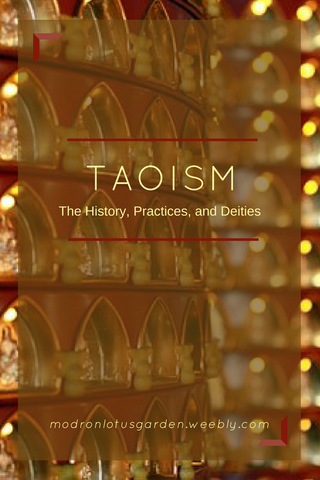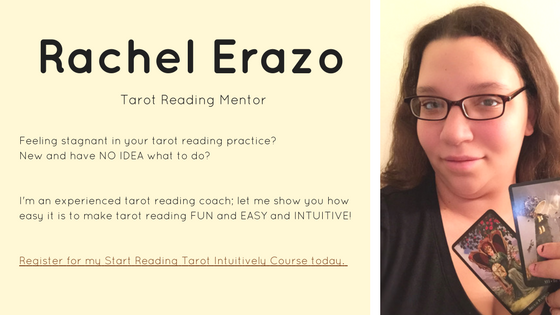Love Modron lotus garden?Get weekly updates about the blog and Facebook group by signing up for the newsletter!
|
|
|
Taoism, like Buddhism, is a philosophy that grew into a religious practice. Originating China around 2000 years ago, it acts as a culminating religion of Chinese beliefs and practices. Let's take a step deeper into Taoism and explore it's practices in today's article for the Introduction to Deity Worship series. **Note: Any information you find here has been from research that I have done personally. If you have doubts or questions about anything I've found, please feel free to follow the links I provide to the original sources and research further for yourself. This is meant to be a collection of knowledge, ideas, and a starting point for deity worship.** OriginsTaoism (Daoism for English spelling to give correct Mandarin-Chinese pronunciation) is a system based around "Tao" or "The Way". "Tao" is like the Big Bang; how the universe and life are created. It's made up of qi (or breath) and forms Three Purities:
Remember that "Tao" isn't a god or being, just a philosophical thought. Taoism does have a large pantheon of deities, however. But "Tao" is not a being. Taoism, unlike other religious systems, is indefinable and unexplainable through human words. It's a meaning and thought system that is meant to be discovered over time through the practitioner. Click here for three easy steps to start learning Taoism. IdeologyYin Yang is the most recognizable concept for most from Taoism. It's all about the natural opposite forces and patterns of life, the masculine and feminine in all things, and that opposites work in harmony together. One concept cannot exist without the other, which is different from the Western idea of what Yin Yang is. Likewise, these energies or oppositions are always ebbing and flowing. Another concept, Ch'i (or qi) is also known; it's the breath or vitality that all forms of life need to survive. As a lot of the gods within Taoism were humans who attained immortality, there is a philosophy about it within the practice. Instead of moving through cycles of life and trying to reach a state of enlightenment, we need to connect with nature and it's energy throughout our lives and then die to truly become one with the universe and obtain immortality. Click here for other concepts and symbols within Taoism. PracticesPhysical Practices - Alchemy Alchemy within Taoism is about transforming your physical being into something more valuable; you can live a longer, healthier life if you take care of your physical body internally and externally. Likewise, the alchemy of Taoism is internal and external. External deals with exercise and diet while internal is your mind and emotional state. Here's some alchemy practices that are used in Taoism:
Other physical practices include enhancing and harmonizing the flow of ch'i in your body, following certain practices and philosophies about sexual acts, and abstaining from certain foods. Talismans Talismans can be used for magic in witchcraft. For Taoism, they can be made to bring good luck or keep away evil. They can only be written, or drawn, by those who are trained and qualified to do so. Please do some research attempting to make a Taoist talisman. deitiesLao Zi is thought to be the Supreme Purity in physical form, especially as he wrote the Daodejing. This made him, also, the creator of Taoism. The Jade Emperor, or Yu Huang, is a major figure in Chinese mythology; he's seen as the ruler of the universe and holds the most power. Some other important deities are:
AltarThe arrangement of items for a Taoist altar is very specific for each ritual and practice. Just like the setting, the objects on the altar may come and go according to the ritual. Deity Representation This can be a picture of statue of the deity you're honoring. Sacred Lamp This is placed in the center of the altar in front of the Deity being honored. Two tall candles, representing the Sun and Moon, Yang and Yin, are to be palced on either side of the lamp. This represents the light of Tao. It's never lit or blown out as it's meant to be outside the cycles of creation and dissolution. Three Cups Place in front of the Sacred Lamp three cups. The left should contain water (representing Yang), the right containing tea (Yin), and the center has uncooked rice (the union of Yin and Yang). Five Plates of Fruit and Five Bowls of Food Put these five plates and five bowls in front of the three cups. The plates each represent the five elements in their prenatal, or Earlier Heaven, form. The bowls are the elements in postnatal, or Later Heaven, form. Incense Burner In the very front is an incense burner. This represents the "stove" or lower abdomen of the body. Three sticks of incense, each representing the Three Treasures (Jing, Qi, and Shen), should be inserted.
0 Comments
Leave a Reply. |









 RSS Feed
RSS Feed
